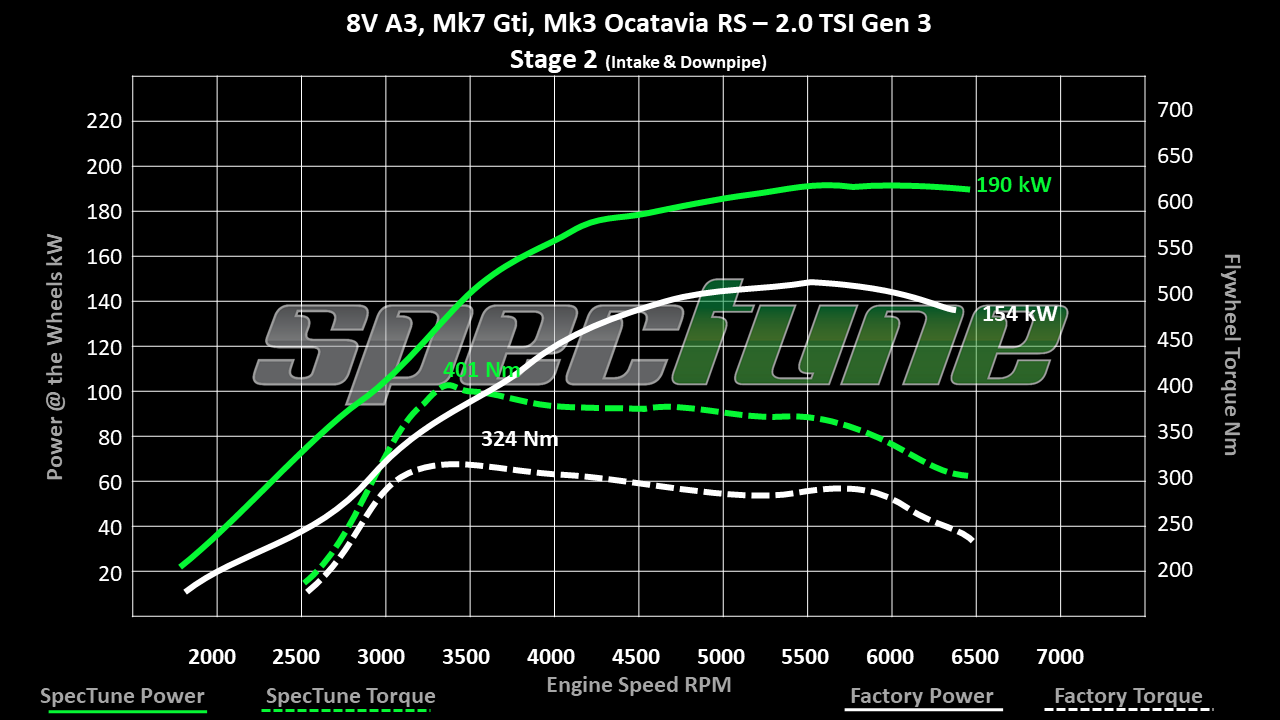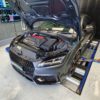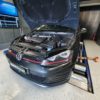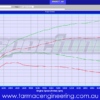No products in the cart.
Return To Shop
FREE SHIPPING AUSTRALIA WIDE
Tarmac Engineering utilize a 4WD Mainline Dynamometer to help aid us to increase the power output of vehicles. There is often some confusion about how and what a Dyno is used for with the most common preconception being that a car is placed on the Dyno rollers and several cables and hoses are connected to the vehicle and the Dynamometer magically increases the power output, however this is far from what actually happens.
A Dyno is simply a measuring device we use to provide live Power & Torque output. We’re also able to connect other devices which supply data on crucial engine components so we can make calibration changes to the vehicles ECU ( Engine Control Unit). Using a Dyno is an expensive tool but necessary when properly developing additional Power and Torque as we hit speeds of up to 180km/h which we’re not able do on public roads.
When Dyno Tuning your vehicle we’re able to record Power & Torque graphs (refer pic below) of your vehicle and provide you with a before and after result sheet so you can clearly see the differences. The most exciting part of this is when you first drive your vehicle afterward as you will immediately feel the difference on the road.
The real brains behind this process is the individual or team of people modifying the software in your ECU to achieve greater Power, Torque & Driver experience.
Tarmac Engineering through our SpecTune brand can custom tune your vehicle on the Dyno to achieve the best Power & Torque output safely and reliably. Our expertise lies in European vehicles such as VW, Audi, BMW, Mercedes, Porsche, McLaren, and Ferrari and we’re able to tune various other makes and modes including Diesels. Please contact us to make a booking.
About SpecTune
SpecTune is Tarmac Engineering’s Software calibration brand
SpecTune unlocks the true performance of your vehicles engine through advanced ECU Tuning resulting in an increase to vehicle power and torque safely throughout the entire RPM range. This unique process is accomplished by calibrating how the ECU communicates to the engines vital components to provide a true performance experience.
We employ an extensive process in developing vehicle software
- Record thousands of datalogs from the vehicle in its factory state across all types of applications including controlled dyno cell, road driving, track racing and drag racing. Datalogs provide real time feedback of engine data including boost, air fuel ratio, ignition timing, intake air temperatures and hundreds more. Datalogs and Factory ECU algorithm is then studied.
- ECU coding development. Before we start increasing engine performance we must understand exactly how the factory ECU works. SpecTune engage with industry leading software which gives us access to 100% of the code in the ECU so nothing is missed, everything is considered. Having complete access to 100% of the ECU gives us a huge advantage over our competitors which can be restricted to only a few maps given to them by poor 3rd party software.
- Performance development is started. As we slowly start calibrating all vital engine components to achieve increases in power and torque we strictly adopt the OEM safety mechanism code as used by the factory to ensure reliability and longevity of engine components. This process is carried out with factory hardware and then a variety of aftermarket hardware inlcluding Cold Air Intakes, Exhaust systems, upgraded fuel parts, intercoolers, DSG tunes and race fuel.
- After we’re happy with our results the vehicle is tested in multiple environments to ensure optimized performance is achieved no matter what the driving conditions. Any fine tuning calibration will take place at this point and be retested.
- SpecTune software for your vehicle platform is released and ready to enjoy.
Key points:
- 30% average increase in Power and Torque + better throttle response
- Tuned specifically to your vehicle
- Choose your power delivery type
- Option to switch between tune types in the comfort of your home or workplace
- Tuned to suit Australian conditions
- Complete custom tuning available
- Factory ECU safety mechanisms used for reliability
- Completely reversible back to the factory tune
- All ECU algorithms calibrated correctly to deliver ultra-smooth performance
- Engineered to work in all environments








